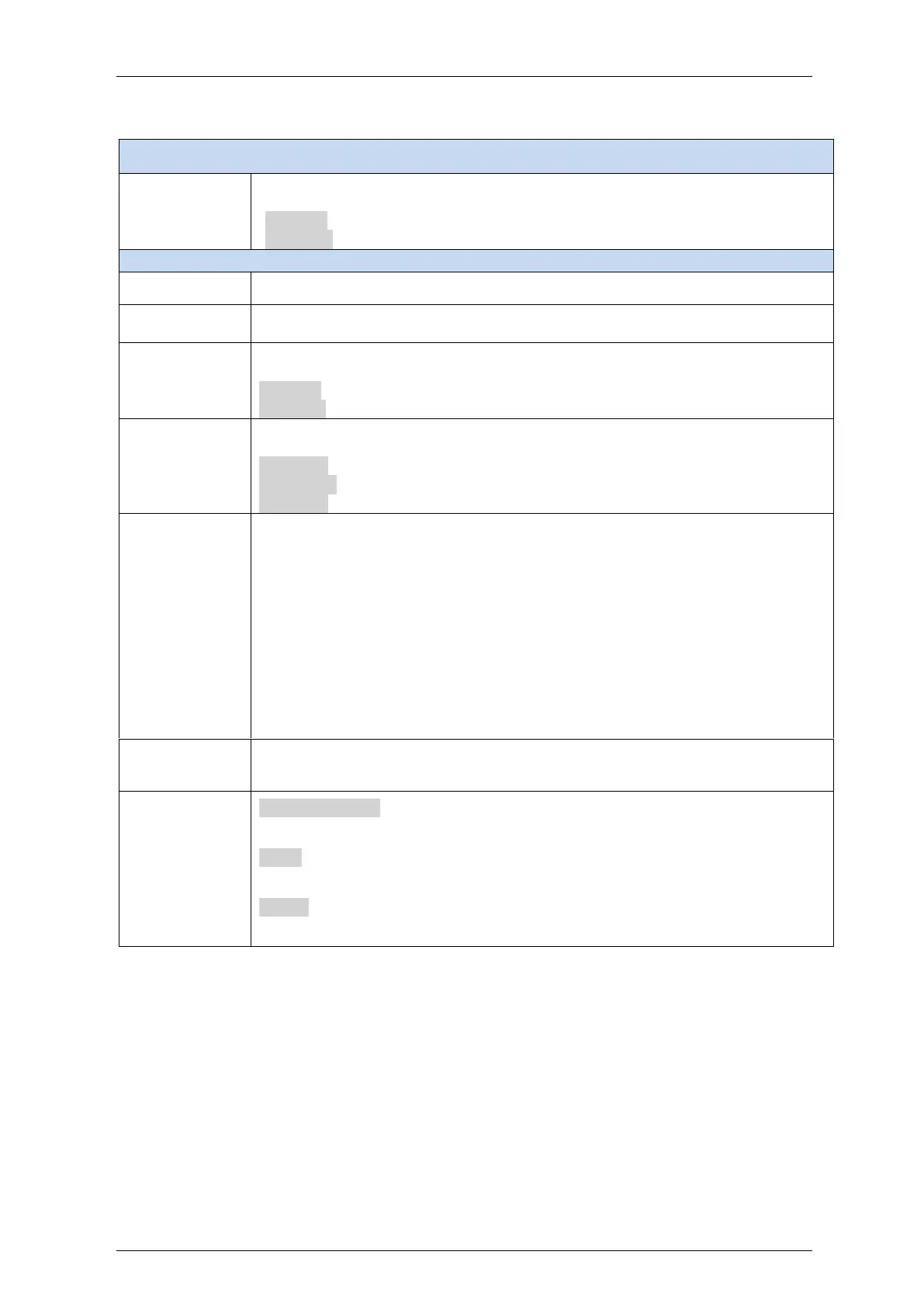Falcon M-Class | User Guide
394
Table 5-23: SNMP Trap Configuration Parameters
Indicate the SNMP trap mode operation.
Possible modes are:
“Enabled”: Enable SNMP trap mode operation.
“Disabled”: Disable SNMP trap mode operation.
Trap Destination Configuration
Check to delete the entry. It will be deleted during the next save.
Indicates the trap Configuration‘s name
Indicates the trap destination's name.
Indicates the trap destination mode operation.
Possible modes are:
Enabled: Enable SNMP trap mode operation.
Disabled: Disable SNMP trap mode operation.
Indicate the SNMP trap version.
Possible versions are:
SNMP v1: Set SNMP trap supported version 1.
SNMP v2c: Set SNMP supported version 2c.
SNMP v3: Set SNMP trap supported version 3.
Indicates the SNMP trap destination address. It allows a valid IP address in dotted
decimal notation ('x.y.z.w').
And it also allows a valid hostname. A valid hostname is a string drawn from the
alphabet (A-Za-z), digits (0-9), dot (.), dash (-).
Spaces are not allowed, the first character must be an alpha character, and the
first and last characters must not be a dot or a dash.
Indicates the SNMP trap destination IPv6 address. IPv6 address is in 128-bit
records represented as eight fields of up to four hexadecimal digits with a colon
separating each field (:). For example, 'fe80:: 215:c5ff:fe03:4dc7’. The symbol '::'
is a special syntax that can be used as a shorthand way of representing multiple
16-bit groups of contiguous zeros; but it can appear only once. It can also
represent a legally valid IPv4 address. For example, ':: 192.1.2.34'.
Indicates the SNMP trap destination port
SNMP Agent will send SNMP message via this port, the port range is 1~65535.
Add New Entry:
Click to add a new user.
Save:
Click to save changes.
Reset:
Click to undo any changes made locally and revert to previously saved values.
